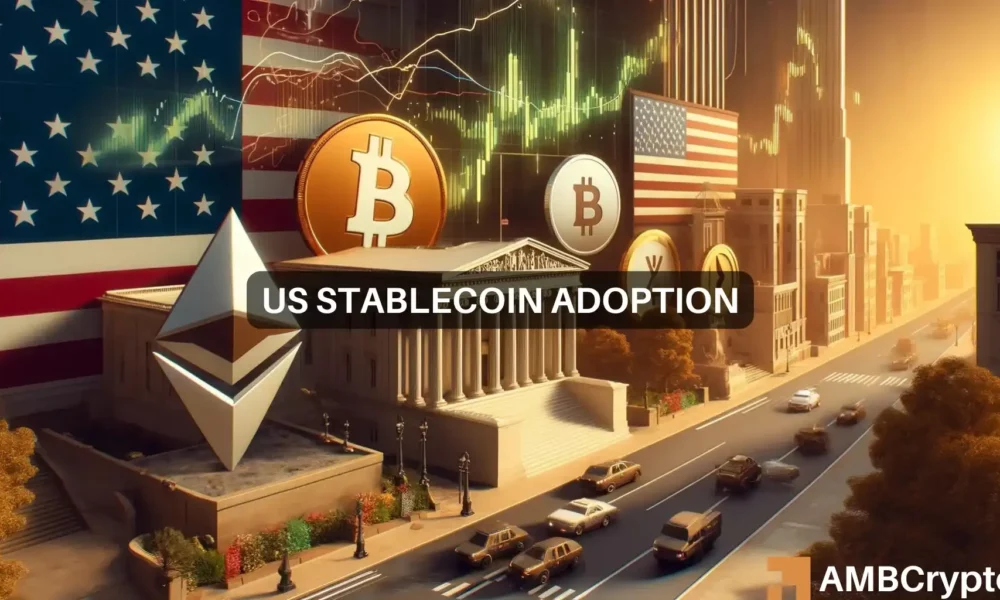- STablecoin adoption is growing, but complex US regulations are hindering progress.
- Tether’s influence raises concerns about regulatory and tax inequality in the US.
The United States economy has witnessed a major change in sentiment regarding cryptocurrency. Starting with the adoption of spot Bitcoin [BTC] ETFs, followed by preliminary approval of Ethereum [ETH] ETFs, and now the crypto-influenced presidential election.
All these events highlight the US’s softening attitude towards the industry. Amid these dynamic changes, one question arises: how will these shifts impact stablecoins?
In the recent ‘Unleashed’ podcastFormer CFTC Chief Innovation Officer Daniel Gorfine emphasized that US-backed stablecoins represent a significant opportunity for the US to strengthen its financial dominance.
However, he noted that the US has been slow to develop federal regulations for stablecoins. He said,
“There are many global jurisdictions moving forward with regulations and standards around stablecoins, including dollar-backed stablecoins, and that will happen before the US does anything at the federal level.”
Furthermore, despite the risks that cryptocurrencies pose to the financial system, Gorfine underlined that it is Bitcoin that has initiated discussions on new financial infrastructures, including stablecoins and CBDCs.
The need for stablecoins
Since cryptocurrencies like Bitcoin are highly volatile, it is stablecoins that come to the rescue. Their value remains stable because they are pegged to fiat currencies such as the US dollar, making them reliable digital assets.
Needless to say, the growing adoption of these coins is clearly visible as major industry players such as Stripe and PayPal have started accepting stablecoins, such as USDC, for mainstream payment functions.
Adding to the fight, former CFTC Chairman Chris Giancarlo noted in the same conversation:
“I think stablecoins are potentially a great way to meet the unmet global demand for dollar exposure.”
These discussions highlight the ability of stablecoins to shake up traditional payments and protect the global position of the US dollar.
However, looking at the other side of the story, the complex US regulatory landscape poses hurdles to stablecoin expansion.
The US regulatory framework in question
Proposing the use of the dual banking system model, which includes both state and federal regulatory oversight, Gorfine added:
“This shouldn’t be as complicated as we make it… I think we can create coherent oversight of stablecoin issuers quite easily.”
While countries like Singapore efficiently license US dollar-based stablecoin issuers, the US is still struggling to establish a coherent regulatory framework for its own currency.

